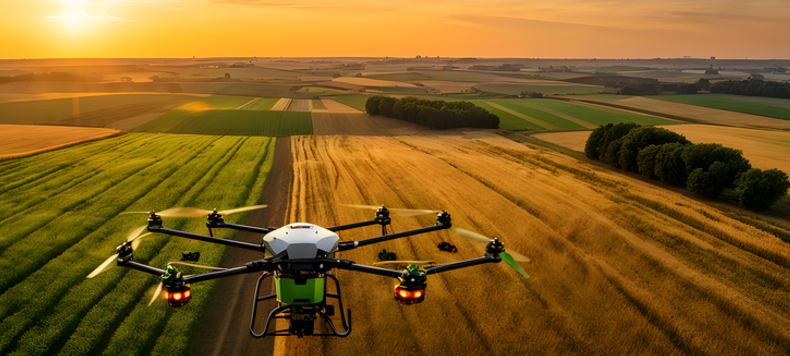
(Photo : pixabay.com)
Indian Agritech: A Landscape of Growth and Innovation
- India's agritech sector is set for expansion, with 19 soonicorns and 40 minicorns, according to a Reserve Bank of India paper.
- Government support has led to increased investor interest, with investments rising from $370 million in 2019 to $1.25 billion in 2021.
- Emerging technologies like AI, IoT, and big data analytics are being utilized by these startups, facilitated by government initiatives.
- Despite potential, challenges like inadequate funding and fragmented land holdings hinder growth, requiring continued government support.
India's agritech sector is on the brink of significant expansion, with the potential to bridge the technological gap in the agricultural industry, according to a recent paper published by the Reserve Bank of India (RBI). The paper, titled 'Agri-Tech Startups and Innovations in Indian Agriculture,' indicates that the country currently houses 19 agritech soonicorns and 40 minicorns. These startups are harnessing emerging technologies such as artificial intelligence (AI) to create innovative business models.
The authors of the paper, D Suganthi, Jobin Sebastian, and Monika Sethi, have identified only one unicorn in the Indian agritech landscape. However, they estimate that there are 19 soonicorns (startups on the brink of becoming unicorns) and 40 minicorns (emerging startups with significant potential).
The paper also underscores the benefits that these startups receive from the government, including funding support, research and development assistance, and state support in the form of digital infrastructure.
Government Support and Investor Interest
This support has contributed to a surge in investor interest in India's agritech ecosystem, with investments increasing from $370 million in 2019 to $1.25 billion in 2021. However, the paper notes that investor interest has moderated, mirroring global trends. Global funding to agritech startups reached a peak of $10.9 billion in 2021 and 2022, before sharply moderating to $5.2 billion in 2023.
In terms of the share of agritech companies by funding, the US holds the highest share at 43.2%, followed by China at 14.4%, Canada at 12%, and India at 8.5%. Despite this, the Indian agritech ecosystem has managed to garner a significant share of global funding.
The central government plays a crucial role in promoting agripreneurship and innovation. It does this through initiatives that reduce regulatory barriers, develop innovation-driven infrastructure facilities, and promote active collaboration among entrepreneurs.
Emerging Technologies and Challenges
The government's role in building a robust ecosystem for nurturing innovation and facilitating agritech mainstreaming by developing agri-stack is significant, the paper emphasizes. Emerging technologies such as the Internet of Things (IoT), big data analytics, AI, blockchain, remote sensing, biotechnology, drones, robotics, and automation are being employed by several startups.
The government's policy support in the form of 'Digital India,' 'Make in India,' startup funds, and accelerator and incubator-support initiatives, further accentuated by opportunities generated during the pandemic, have been essential facilitators of agritech startups' growth.
Despite the progress made so far, the paper points out that agritech startups in India face challenges in scaling up their operations. The sustainability of these startups is directly proportional to the adoption of modern technologies by farmers. The lack of adequate funding, fragmented land holdings, and longer time to revenue matrix are major factors hindering their growth prospects.
* This is a contributed article and this content does not necessarily represent the views of btin.co.in









